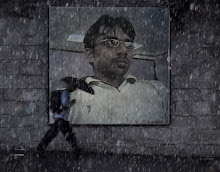During the second millennium B.C., pastoral, Aryan-speaking tribes migrated from the northwest into the subcontinent. As they settled in the middle Ganges River valley, they adapted to antecedent cultures.
The political map of ancient and medieval India was made up of myriad kingdoms with fluctuating boundaries. In the 4th and 5th centuries A.D., northern India was unified under the Gupta Dynasty. During this period, known as India's Golden Age, Hindu culture and political administration reached new heights.
Islam spread across the Indian subcontinent over a period of 500 years. In the 10th and 11th centuries, Turks and Afghans invaded India and established sultanates in Delhi. In the early 16th century, descendants of Genghis Khan swept across the Khyber Pass and established the Mughal (Mogul) Dynasty, which lasted for 200 years. From the 11th to the 15th centuries, southern India was dominated by Hindu Chola and Vijayanagar Dynasties. During this time, the two systems--the prevailing Hindu and Muslim--mingled, leaving lasting cultural influences on each other.
The first British outpost in South Asia was established in 1619 at Surat on the northwestern coast. Later in the century, the East India Company opened permanent trading stations at Madras, Bombay, and Calcutta, each under the protection of native rulers.
The British expanded their influence from these footholds until, by the 1850s, they controlled most of present-day India, Pakistan, and Bangladesh. In 1857, a rebellion in north India led by mutinous Indian soldiers caused the British Parliament to transfer all political power from the East India Company to the Crown. Great Britain began administering most of India directly while controlling the rest through treaties with local rulers.In the late 1800s, the first steps were taken toward self-government in British India with the appointment of Indian councilors to advise the British viceroy and the establishment of provincial councils with Indian members; the British subsequently widened participation in legislative councils. Beginning in 1920, Indian leader Mohandas K. Gandhi transformed the Indian National Congress political party into a mass movement to campaign against British colonial rule. The party used both parliamentary and nonviolent resistance and non-cooperation to achieve independence.
On August 15, 1947, India became a dominion within the Commonwealth, with Jawaharlal Nehru as Prime Minister. Enmity between Hindus and Muslims led the British to partition British India, creating East and West Pakistan, where there were Muslim majorities. India became a republic within the Commonwealth after promulgating its constitution on January 26, 1950.




No comments:
Post a Comment